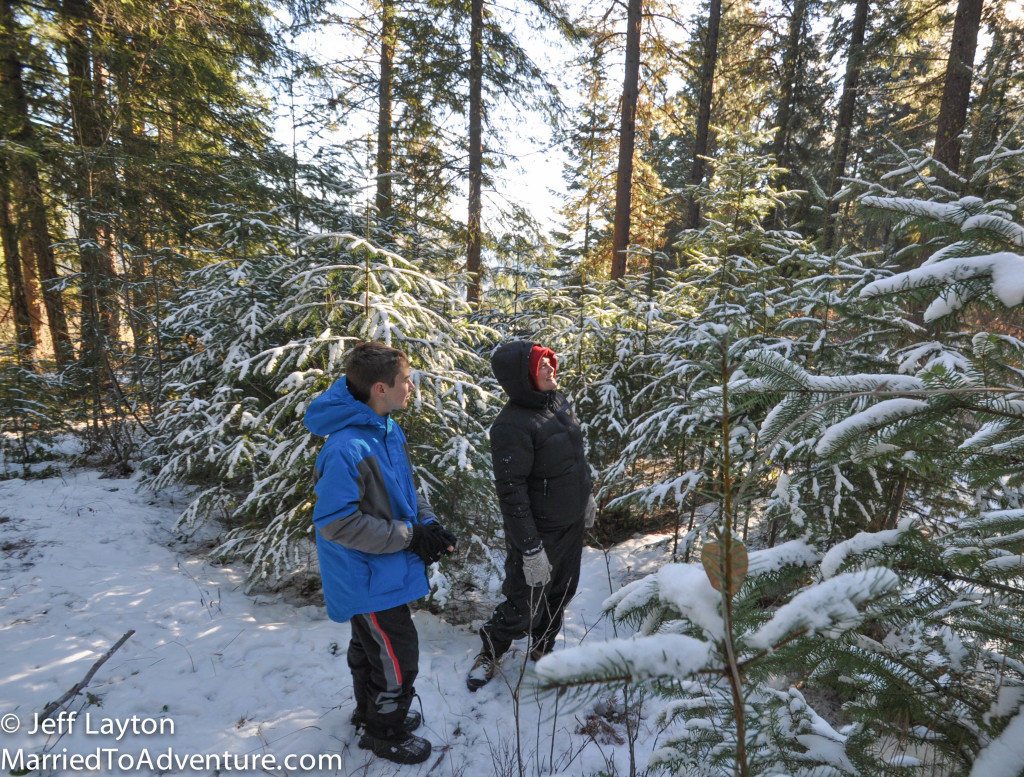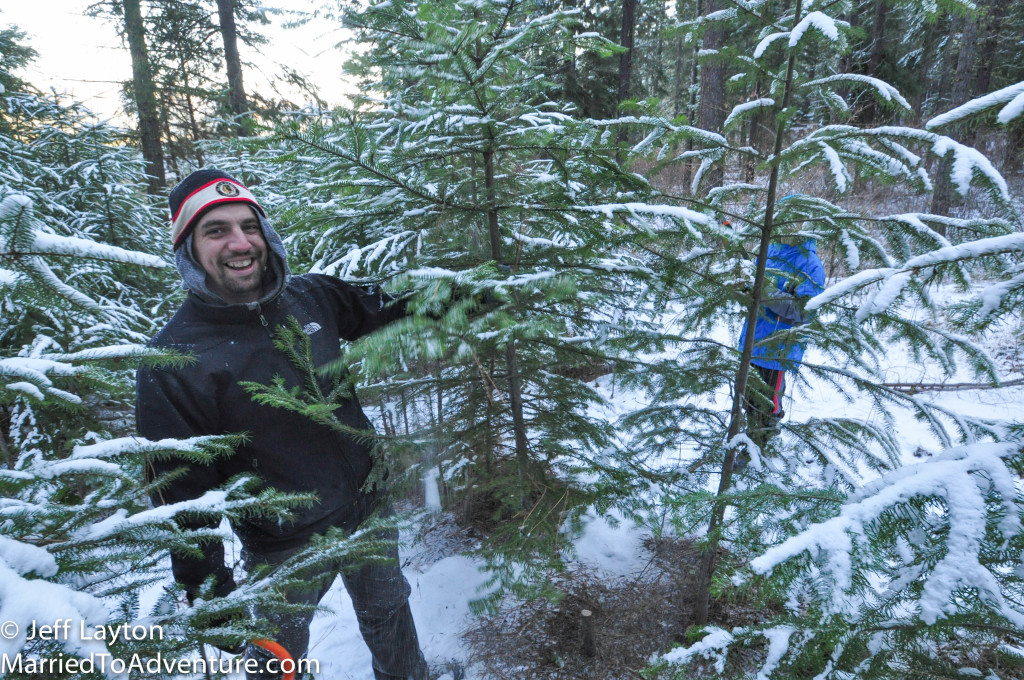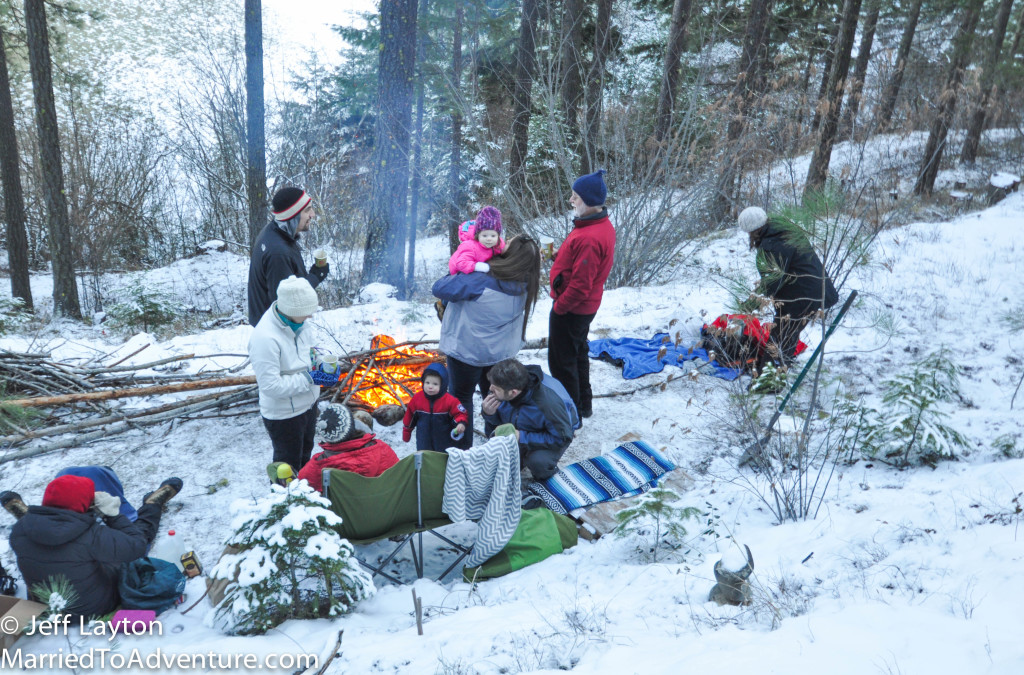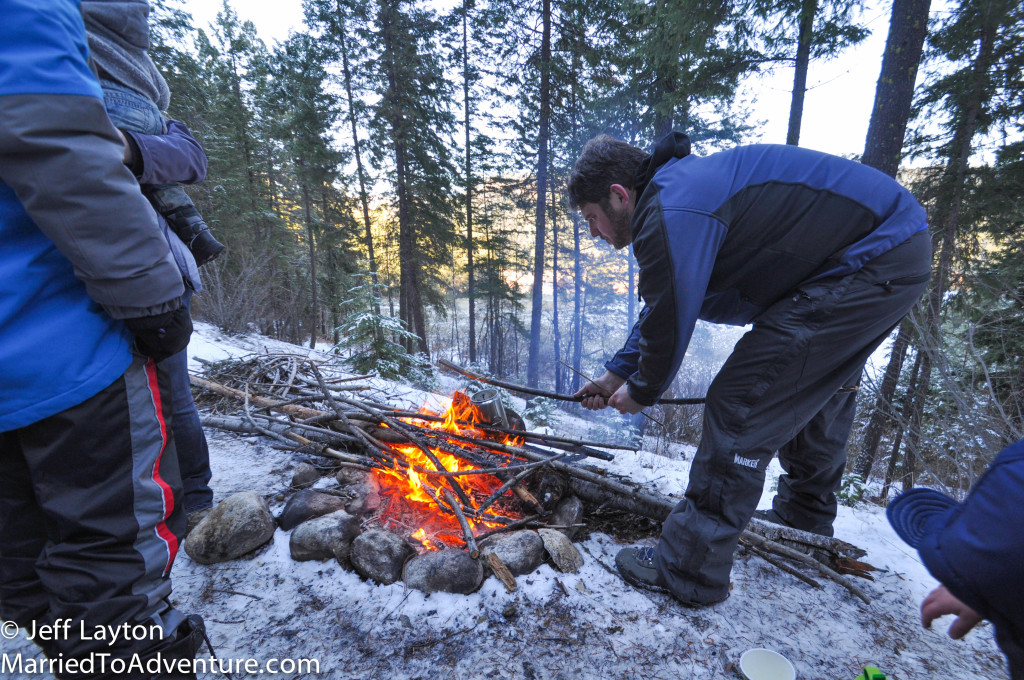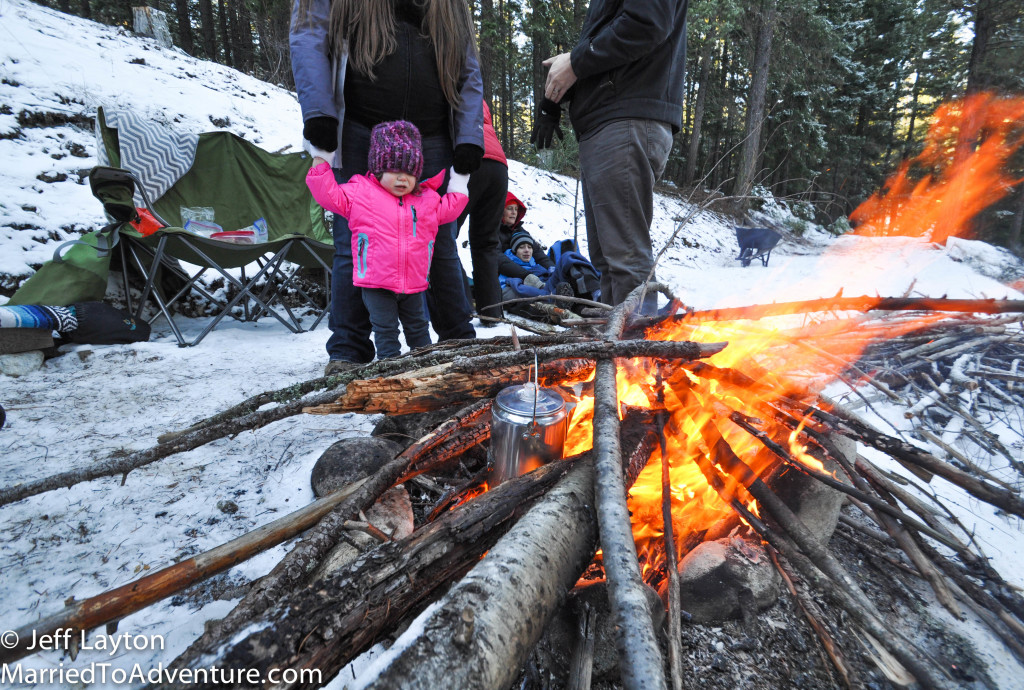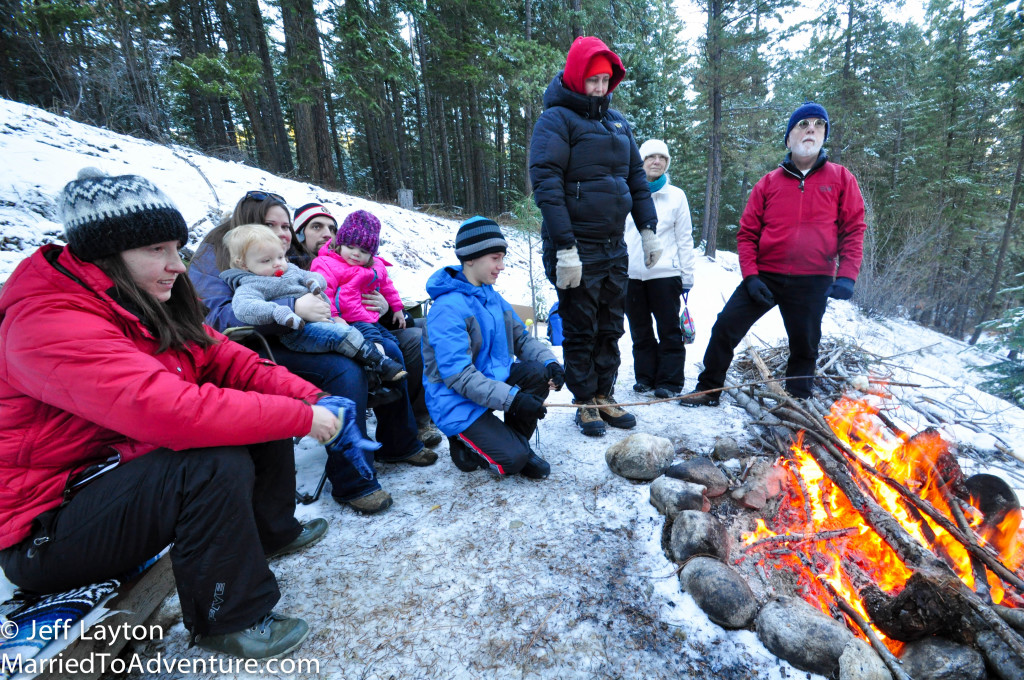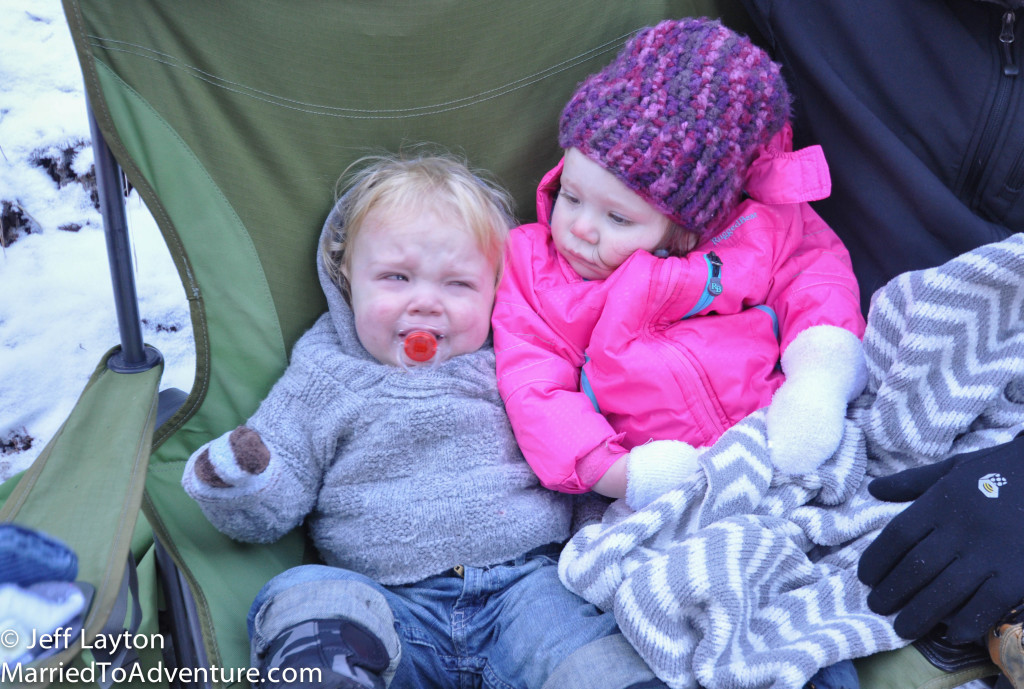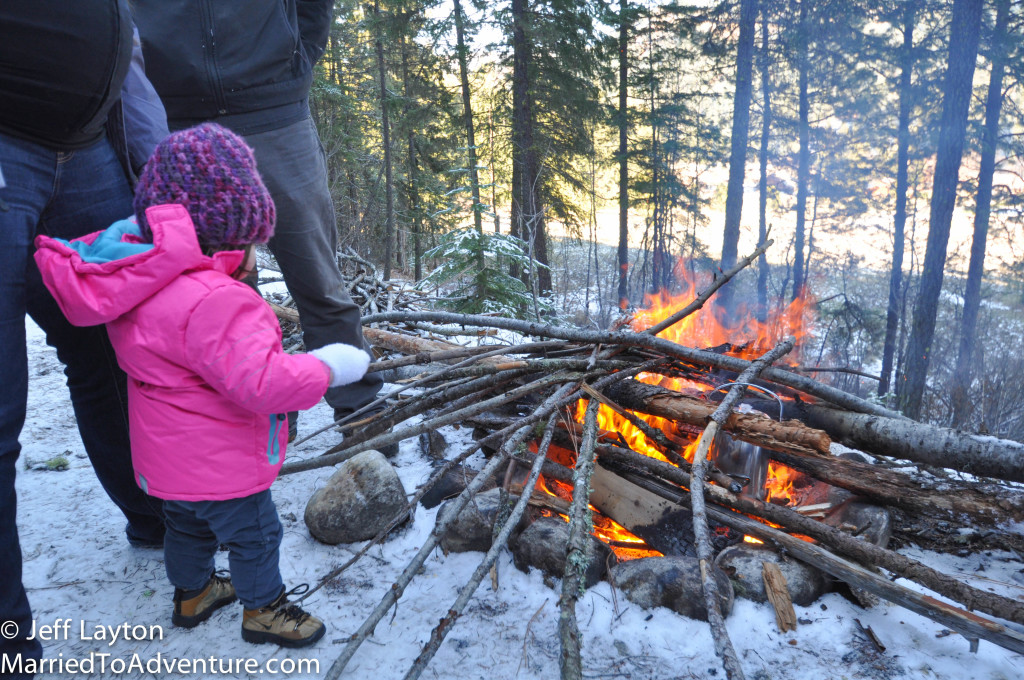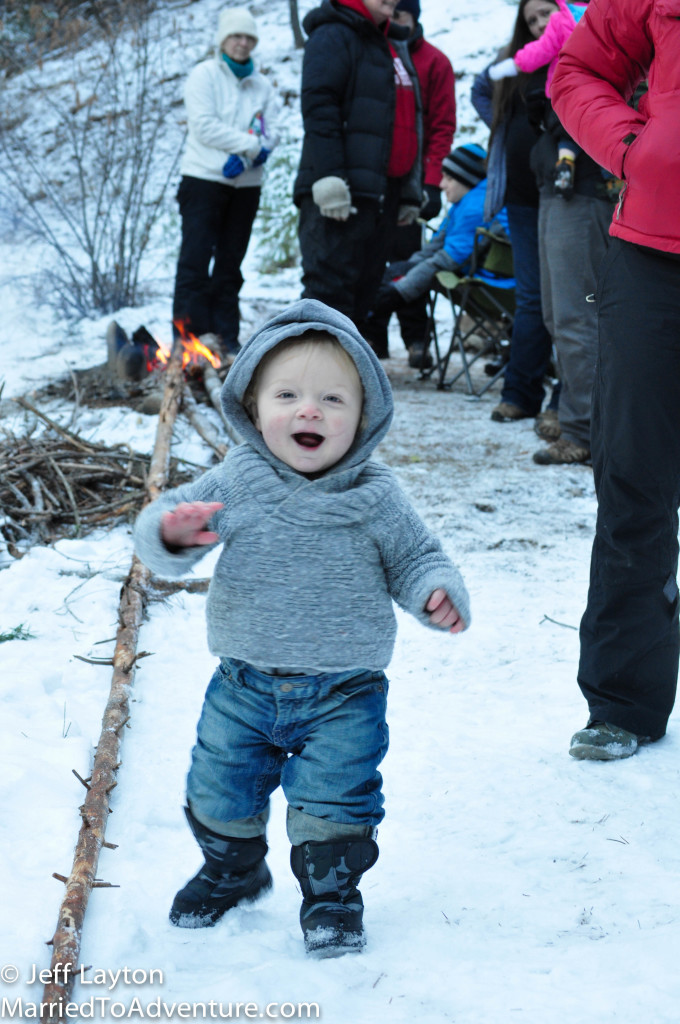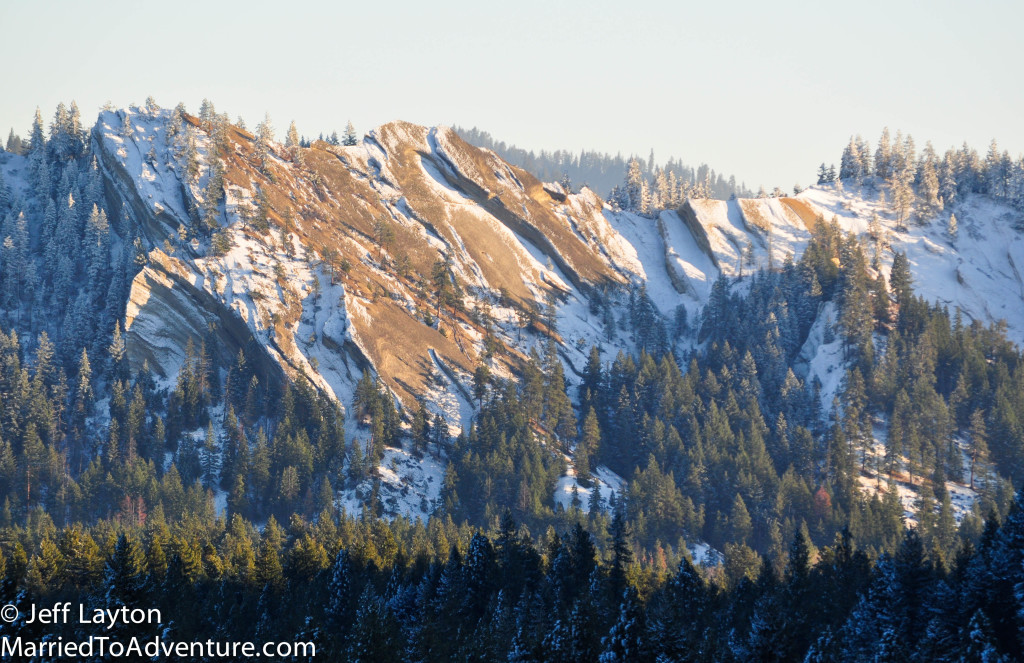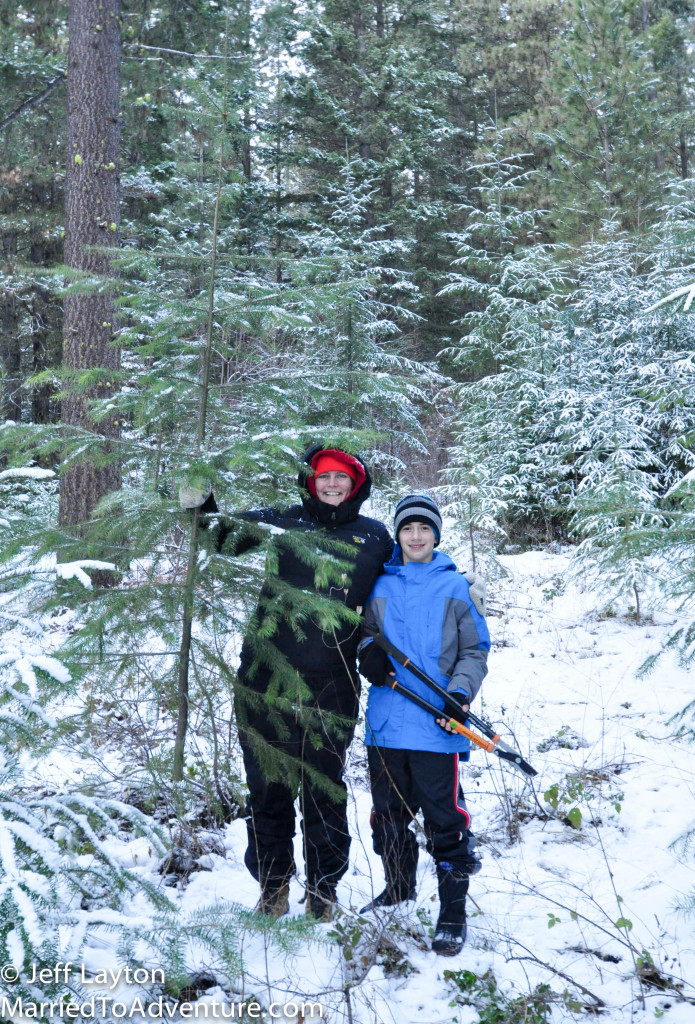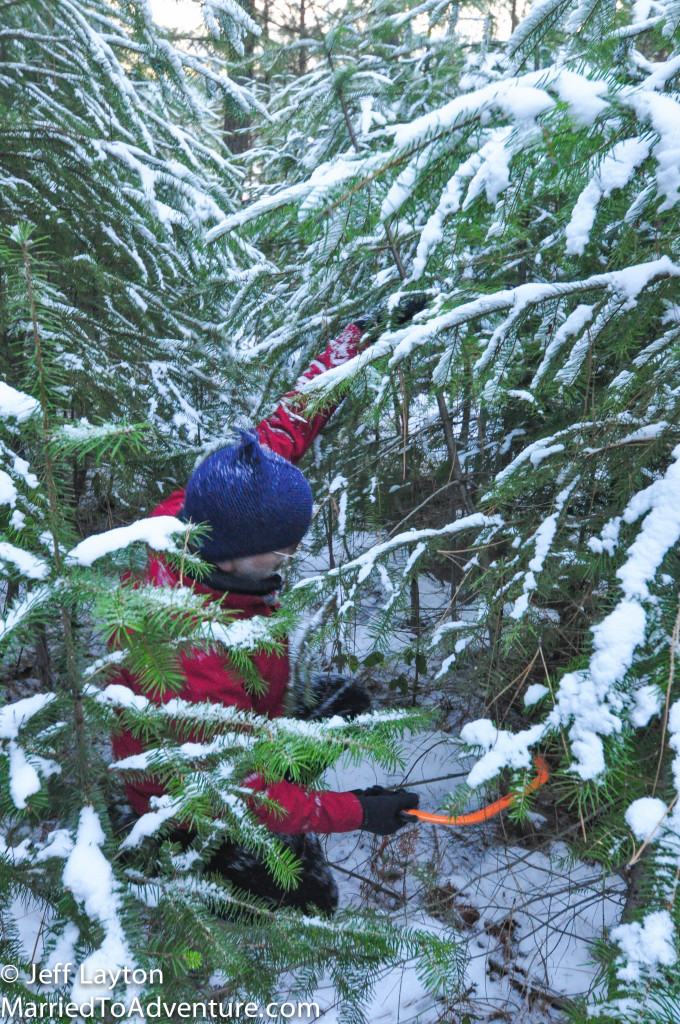It’s hard not to think about Narnia when you light an outdoor bonfire in the winter. Snowy forest scenes are interwoven with C.S. Lewis’ famous children’s series, (and while there were no talking animals at Osprey Acres this past weekend, we did see plenty of tracks in the fresh snow!).
We recently hosted a “U-Pick Christmas tree party” to help us thin some of the prolific young noble firs on our land. It was about 22 degrees F so we knew the party wouldn’t last long if we didn’t get a fire going ASAP.
After a few minutes of drying the native wood, we were able to get a roaring blaze going which turned into a festive little seasonal gathering.
Omri brews us a pot of Turkish Coffee
Since we’ll be living in this environment soon, it was a good chance to get Ian acclimatized to the cold weather. You can see he loved it.
For the most part, the toddlers did great in the cold. Of course there were a few meltdowns (but hey, that happens ten times a day anyway) and we could keep them warm by moving close to the fire.
We snipped a handful of trees on the property in an area that needed thinning. This practice allows the surrounding trees to thrive and grow even bigger. Cutting our tree from public lands has been a really fun annual tradition for our family, and we thought we would share our “best practices” approach to cutting your tree this season.
Advice for Cutting Your Own Christmas Tree
- Get a permit. When you self-harvest a tree from public lands (usually a National Forest), you need a permit. Here in Washington State, they run $5 for a 15′ tree. There are only so many permits issued for a specific region, so think ahead where you want to go and contact the nearest ranger.
- Make sure you’re not on private land. Landowners have a legal right to shoot you if they find you poaching trees on their property. Ask the nearest ranger for advice on finding good trees and where you shouldn’t go.
- Don’t take a lone tree. It’s really tempting to grab the perfect tree in the middle of a clearing. But that tree is helping repopulate an open area.
- Take the younger brother. Ideally, you want to cut a tree that’s growing near another tree. The National Forest allows Christmas tree cutting because it’s helping to thin dense groves. Find two trees crowding one another, and take the smaller. It will allow the big tree to grow even more robust.
- Watch your size. Trees look smaller in the forest so it’s easy to accidentally cut one that’s too big. Most ceilings are only 8′ so pick a tree that’s about as tall as a large male. In dense groves, the trees usually have scraggly bottoms, so you’ll probably have to snip about two feet to make a tree look right.
- Bring Emergency Gear You’re probably going to be on some bad roads – especially if you’re going for a winter wonderland setting. Take traction devices like a shovel and cat litter to help get your car unstuck and carry winter emergency provisions.
- Know your trees. The two most common Christmas trees are Douglas fir and noble fir. Ornaments and lights slide off cedar, and when you bring hemlock indoors, the needles fall off within days.
- Don’t forget the saw. A bow saw works the best but you can also get away with using a standard wood saw.
For more on cutting your own christmas tree, see our blog post Hunting for the Imperfect Tree. Or see the National Forest website here.
